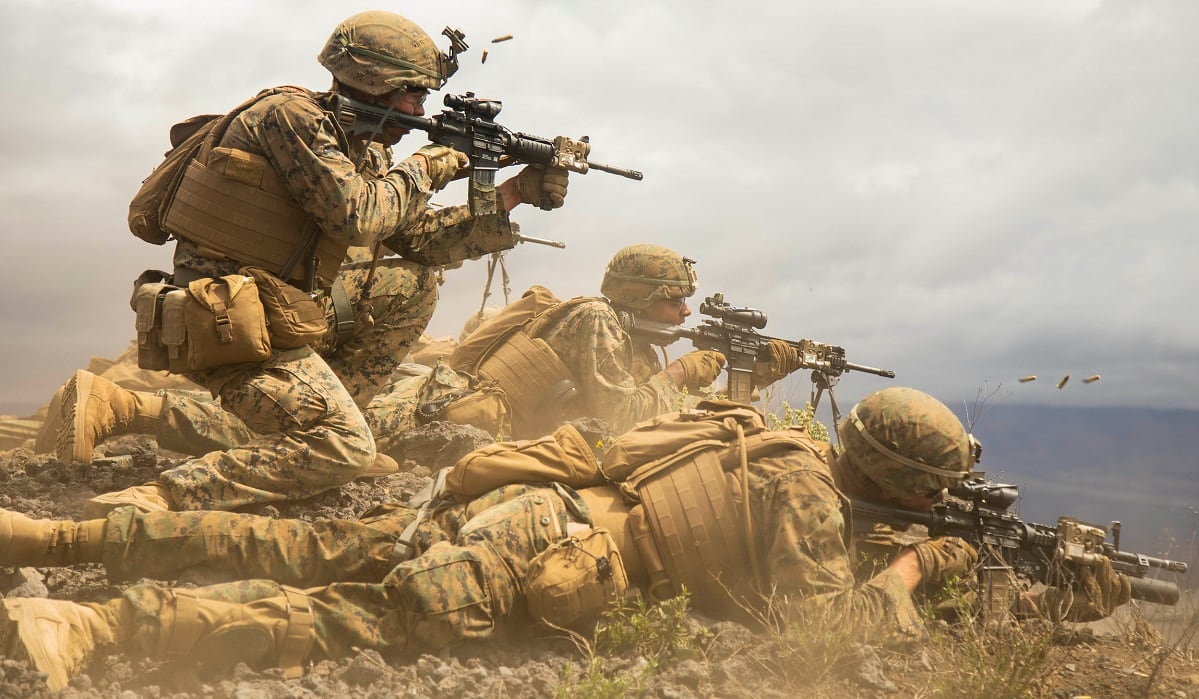The Marine Corps is transforming its force design to meet changing national security challenges, and sweeping changes are coming to better help America’s Marines fight and win.
Commandant of the Marine Corps Gen. David Berger’s Force Design 2030 provides a much-needed correction, returning the Marines to fight as a naval force, at sea, from the sea and from land to the sea.
The Marine Corps would do well to work alongside and learn from Israel, who has made successful innovations similar to the force Berger envisions.
RELATED

The Marine Corps is optimized today for amphibious forcible entry and sustained operations ashore but has lost considerable ground to our adversaries. However, going forward, the fight against Russia and China will be in contested space, demanding lighter, faster, and lethal forces.
Force Design 2030 evolved as a direct result of the National Defense Strategy of 2018, which identified these two countries as revisionist powers and Iran and Korea as rogue nation threats.
When confronting these bad actors, there are three chief realities America must face.
First is that U.S. forces are overmatched when it comes to the mature precision-strike regime. Our adversaries have achieved the missile capability to deny area access and establish area denial (A2/AD). As a result, the U.S. homeland is at greater risk.
Israel, who has lived in that type of threatening environment for many years, has changed its countering strategies. Hezbollah used anti-ship cruise missiles and long-range precision ground ordinance in a highly effective manner, disrupting the Israel Defense Force’s forcible entry capability.
Today, the IDF’s “Momentum” plan no longer focuses on seizing and holding territory. Instead, the IDF focuses on using enhanced sensors and precision weaponry that can shorten the “kill chain” between identifying and eliminating a target.
Israeli technologies are effective and the U.S. military and defense industry are learning from their experiences.
The second reality is that our adversaries are innovating hybrid, proxy warfare strategies that are common today. Russia and China have shown significant capabilities in what the commandant has termed “salami slicing strategies” to counter our conventional superiority by competing in the nebulous “gray zone” between war and peace.
The most prominent of these activities have been Russia’s annexation of Crimea and China’s island-building strategy in the South China sea.
Similar gray zone challenges have cropped up in the Middle East, where Israel has shown early success at rolling back Iran in Syria and Lebanon. Israel has successfully targeted Iran’s illicit weapons sites and facilities for precision-guided munitions.
Also, Israel’s strong technology industry can assist with the Force Design 2030′s demand for small unit leaders to have access to greater digital networks and incorporate them in every domain to create shooter cycles that are fast and survivable.
The third reality is the imperative for maritime campaigning.
The National Defense Strategy has directed the naval forces to orient toward competition at sea because this is where China’s and Russia’s powers are most significant.
Also consider Russian and Chinese technological advancements to their steady advances in aircraft, surface-to-air missiles, and electronic warfare capabilities, and it is evident why the Marines need to update the force design.
However, the Marine Corps is not organized, trained, equipped or postured to meet the demands of the rapidly evolving future operational environment.
Any fight in the Pacific will be an inherently joint endeavor to which the Marine Corps will fully integrate into the naval force. Berger and Chief of Naval Operations Admiral Michael Gilday have set a very aggressive agenda to build the Naval Expeditionary Force of the future. Training, education and experimentation are on a fast pace to field the technologies we need. We will regain “kill chain” dominance.
Force Design 2030 has raised many eyebrows inside and outside of the Marine Corps. The divestment of all tanks, reduction of 16 artillery batteries, three active and two reserve infantry battalions, three Marine heavy helicopter squadrons and a reduction in the size of the F-35 aircraft squadrons have all caused concerns that we are giving up too much capability.
However, the Marine Corps and Navy are working closely together, examining a variety of connectors and logistical equipment ships to find alternate means of getting the job done.
Others believe that an obsession with China in our National Security Strategy will create a conflict and question our ability to put the Middle East and other regions on the back burners. However, the Navy and Marine Corps are engaging in extensive wargaming simulations to handle regional crisis with the new force design in mind.
Likewise, digital command and control, hypersonic weapons, directed energy, autonomous systems and artificial intelligence could elevate America’s ability to fight with a leaner Marine Corps force.
The United States and the Marine Corps along with it are making a large pivot into the Pacific. With Force Design 2030, Commandant Berger has set in motion a complete transformation of the Marine Corps.
Ultimately, this will lead the Marines to be a better fighting force.
Lt. Gen. John Toolan Jr. (retired) is a former commanding general of the Marine Corps Pacific Forces and a member of the Jewish Institute for National Security of America’s Board of Advisors and its Gemunder Center Hybrid Warfare Policy Project. He was also a participant on JINSA’s 2018 Generals and Admirals Program to Israel.
The opinions expressed in this commentary do not necessarily reflect the views of Marine Corps Times or its staff. If you would like to respond, or have a commentary on another Marine Corps topic, please contact Editor Andrea Scott.





